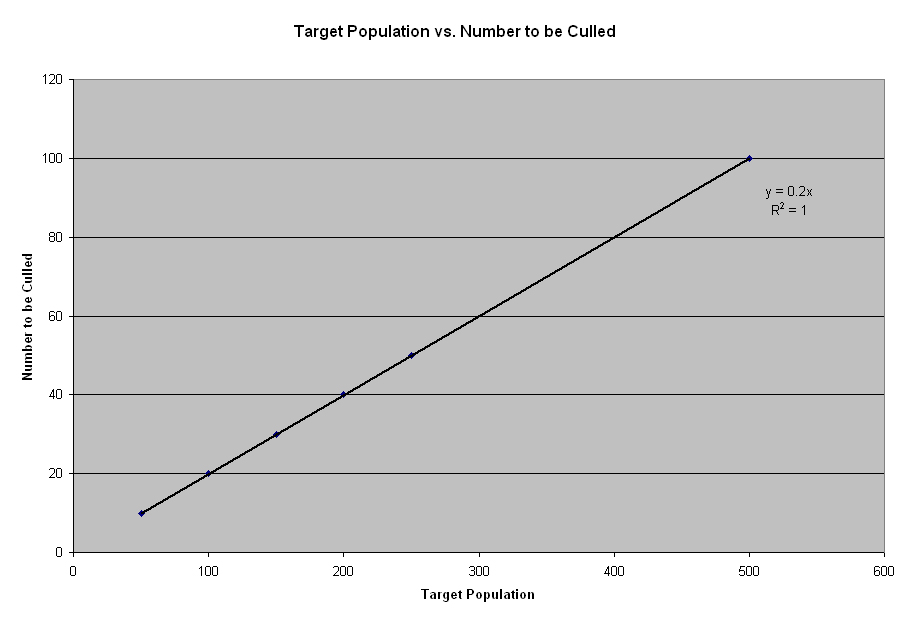
Bison Harvesting on Catalina Island
The American Bison (Bison bison) was introduced to Santa Catalina Island in in 1924 to film the movie The Vanishing America and were supplemented later. This population grew to well over 400 bison. Recently this has been studied (prompted by the Santa Catalina Island Conservancy) on the effects these bison are having on native plant and animal species. The study resulted in suggesting that the bison on the island should be kept at a target population of between 180 and 250 animals.
The Santa Catalina Island Conservancy was established to protect the natural habitat of the island as well as the culture of the island. Because of the cultural and historical significance of the American Bison on the island, the Conservancy wishes to keep a sustainable population on the island without the population being detrimental to the natural environment. This has resulted in the Conservancy taking action by culling the buffalo herd. This culling has created a relationship between the native tribe of Catalina Island and the Sioux Tribe of South Dakota. They have sent parts of the Catalina herd "home" to South Dakota to supplement the depleted herds of the midwest.
My study on the population of the American Bison of Catalina Island focused on how many bison need to be culled each year in order to maintain a consistent population. This cull number would then be used as a gage to determine how many buffalo can be sent back to South Dakota every year. (This model can also be used by ranchers wishing to gage how many they can cull each year to sell as a consumable product.)
I used the data collected by the Conservancy's study of the Bison on the island combined with studies of similar buffalo herds accross the country. There are currently 60 calves, 28 yearlings, and 139 adults on the Island. I found that the fertility of calves would be zero, for yearlings 0.3 (due to low success rates of yearlings breeding in similar herds), and 0.68 for adults (again from the Island study and other studies of similar herds). The survival probability rate of this herd is considerably higher than that of similar herds due to the fact that there are no natural predators on the island. There are approximately six bison a year that must be euthenized due to injury or illness (mostly from breaking legs on cattle guards). This resulted in survival probabilities for all three age groups of 0.992 (Six die each year, divided by target population, 250, equals 0.024. One minus this rate is survival rate of entire population, there are three age groups surviving equally, so find the cube root of 0.976 results in a survival probability of 0.992).
To find the growth rate of this population (l) I had to first set up an exponential model. This exponential model used just the fecudity and mortality of the herd and kept increasing the population size well beyond the target population, or any known carrying capacity. This model resulted in a growth rate for the herd of 1.2834, that is an increase of about 28% each year. This is reasonable considering the relative high fertility rates, and low mortality.
Given all this data (both provided by studies and calculated) I was then
able to establish a harvesting model which describes how many bison would
need to be culled each year in order to maintain a sustainable population.
This model was dependent on only adult bison being culled, and was a simple
model of subtracting the cull number from the adult population for both
calf production and the returning adult population. The cull number was calculated
based on growth rate of the population and population size. This was done
with an if, else function determined by the population size being within five
percent of the target population size. If the population was within five
percent, then the cull factor would be applied to the population, this was
found by subtraccting the previous total by the target size (target population
divided by growth rate) and this was multiplied by the survival probability
of those adults.
(if(total>(target-five percent),then((total - target/growth rate)times survival probability)))
This is essentially getting the population to a smaller number that the growth
rate will then take to the target population in the next year.

Graph of Sustainable Population (size 250)

Graph of relationship between target population and cull number
My study found that for a target population size of 250 bison, approximately 50 bison need to be culled each year. When further studying other target population sizes, I found that aproximately twenty percent of the target population are necessary to be culled each year in order to maintain that target population.
| Target Population | Cull Number |
| 100 | 20 |
| 150 | 30 |
| 180 | 36 |
| 200 | 40 |
| 250 | 50 |
Click on image to enlarge:

American Bison on Catalina Island














